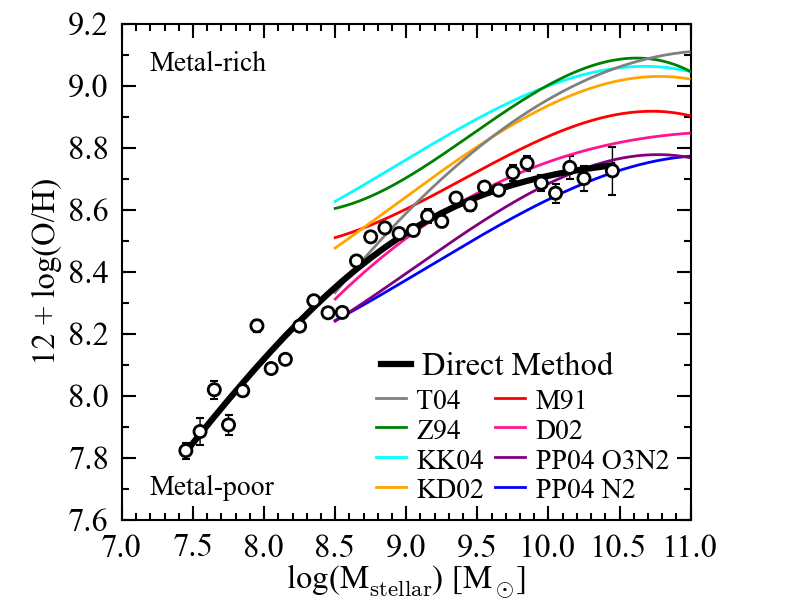Stellar abundance patterns provide vital clues to the formation and
enrichment history of the Milky Way and its stellar populations. The Apache Point
Observatory Galactic Evolution Experiment (APOGEE), a sub-survey
of the Sloan Digital Sky Survey III
(SDSS-III), will measure the abundances of approximately 16
elements in about 100,000 stars across the Milky Way. Both the high
dimensionality and vast quantity of stars in this data set represent a
significant step forward relative to previous studies. To more
efficiently utilize the wealth of information in the APOGEE data, we
will apply principal component abundance analysis
(PCAA), a principal component decomposition of stellar
abundances relative to iron.
In anticipation of the APOGEE data set, we performed PCAA on a small
but interesting sample of microlensed bulge dwarf stars to study the
formation hisotry of the bulge. The first principal component has
large contributions from oxygen and other alpha elements, which
reflects the interplay between enrichment from Type II and Type Ia
supernovae. The second principal component is dominated by a
sodium-nickel correlation. The nucleosynthetic yields of these
elements from Type II supernovae are sensitive to metallicity, so the
second principal component suggests a rapid timescale of formation for
the bulge. Furthermore, the microlensed bulge dwarfs follow a bimodal
distribution in the first principal component, which matches the
bimodality seen in [Fe/H] for these stars.
Currently, we are using PCAA on the results of a simple chemical
evolution model, and we will apply this technique to a more
sophisticated chemical evolution model to make detailed comparisons
with the APOGEE survey.
with David
Weinberg and Jennifer Johnson
 I'm a member of the SDSS-III collaboration and the APOGEE survey. My
main contribution to the survey was writing the target selection
algorithm for the halo fields containing globular clusters. These
fields present unique challenges for target selection due to the
extremely high density of targets in the globular clusters and the
paucity of targets in the rest of the field.
I'm a member of the SDSS-III collaboration and the APOGEE survey. My
main contribution to the survey was writing the target selection
algorithm for the halo fields containing globular clusters. These
fields present unique challenges for target selection due to the
extremely high density of targets in the globular clusters and the
paucity of targets in the rest of the field.

 I'm a member of the SDSS-III collaboration and the APOGEE survey. My
main contribution to the survey was writing the target selection
algorithm for the halo fields containing globular clusters. These
fields present unique challenges for target selection due to the
extremely high density of targets in the globular clusters and the
paucity of targets in the rest of the field.
I'm a member of the SDSS-III collaboration and the APOGEE survey. My
main contribution to the survey was writing the target selection
algorithm for the halo fields containing globular clusters. These
fields present unique challenges for target selection due to the
extremely high density of targets in the globular clusters and the
paucity of targets in the rest of the field.

